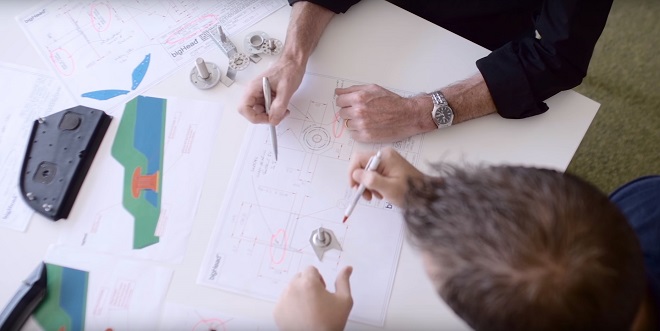

News & insight

Interview: bigHead and Cranfield University discuss Knowledge Transfer Partnership for composite materials joining technologies

bigHead Bonding Fasteners , the UK manufacturer that conceived and designed the world’s most recognised bonding fastener and Cranfield University have formed a Knowledge Transfer Partnership (KTP) focussed on new joining technologies for composite materials.
Dr. Lawrence Cook who leads research and development work on matrix-polymers and adhesives at Cranfield, shares his views on the close working partnership with bigHead.
- What does the partnership between bigHead and Cranfield consist of?
The Knowledge Transfer Partnership (KTP) is a strategic working partnership, between bigHead and Cranfield, implemented through the KTP associate whom works as a product development engineer at bigHead. The KTP presents an excellent opportunity for exchanging knowledge and expertise between the partners. This partnership includes regular visits between the two partner’s facilities and a continuous working dialogue between the partners at various hierarchical levels.
- How do both parties benefit from this partnership?
bigHead, as the industrial partner, benefits from access to knowledge and expertise in the field of composite materials and manufacturing, and joining techniques for composite and multi-materials. Cranfield, as the academic partner, benefits from greater understanding and applied experience of bigHead’s joining solutions, and knowledge of the industrial challenges facing bigHead’s customers and clients. Both partners benefit together from expanding their industrial and academic networks, and by engaging with new partners, suppliers or customers as the KTP progresses.
- Why do both parties think this kind of partnership/R&D project is beneficial for them?
For bigHead, embedding composites materials and manufacturing knowledge into their wider team enables the company as a whole to be conversant in these ever-developing materials and technologies. This supports knowledgeable and informed discussions with customers and industrial partners, which is a key requirement for bigHead being able to offer and grow a fastening solutions business for customers whose applications feature advanced composite materials. Having access to Cranfield’s applied composites manufacturing and joining research capability gives bigHead ability to actively develop fastening solutions and demonstrate them to customers and clients. This allows bigHead to spearhead development and offering of composites focussed joining solutions within the Bossard group.
For Cranfield, the experience of working with bigHead and their partners helps highlight the real-world challenges that arise from joining of composite materials either to themselves or other materials, in mass-market applications. Knowing where these challenges exist allows Cranfield to focus their research on providing applied research that helps industrial partners solve such challenges. Drawing on bigHead’s membership of the Bossard group allows Cranfield to grow applied knowledge and expertise in the field of joining technologies for multi-material structures. This increased knowledge subsequently supports applied teaching for engineering and design focussed learners at Cranfield and within industry.
- What are the long term goals of the partnership and how does Cranfield see the future of the composites world in Automotive?
Ultimately, the goal of the partnership is to support bigHead in developing and offering composite materials fastening solutions, initially for the automotive industry, and for other applications thereafter. The KTP, and subsequent continuation the working partnership is synergetic to both bigHead and Cranfield’s long-term plans – to be leaders in the field of joining and fastening solutions for composite and multi-material structures and applications.
The automotive market is particularly exciting due to the fast-changing landscape of composite materials and multi-materials manufacturing within this field, which is driving an appetite for lean, fast, reliable, and low-cost joining or fastening techniques.
Vehicle light-weighting efforts continue to drive materials and manufacturing developments, along with a shift towards alternative powertrains and different vehicle architectures. As vehicle designs adapt to new powertrains and a potentially seismic shift in vehicle usage/ ownership scenarios such as autonomous driving or ride-hailing, new players are emerging in the automotive market – thus expanding possibilities for new relationships and partnerships. With the upcoming generation of vehicles, Cranfield foresee significant interest in highly integrated, low-cost, reliable materials processing and joining techniques, a significant focus on reparability of novel materials and structures, and an increase in the requirement for robust, dependable multi-functional materials and structures.
